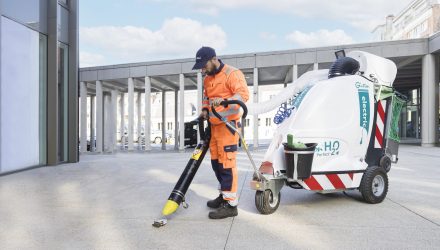With the constant rise in urban delivery, the welfare of drivers must become an important factor in fleet management. In this article, Matt Hawkins, Flexis Head of UK & Ireland looks at the welfare of delivery drivers and make some recommendations to improve the situation.
Urban delivery drivers have a tough job. Every day, they navigate congested streets, juggle tight delivery windows, contend with limited parking, and manage the demands of an increasingly fast-paced, convenience-driven economy. On top of this, 42% report experiencing physical pain as a result of their work – a clear sign that the job is taking a toll on their bodies. And while serious incidents remain rare, the risks are real, as evidenced earlier this year when a courier in Leeds was tragically killed while on the job.
Keeping our delivery drivers safe is a complex problem, and it demands a multi-faceted solution: smarter routing to avoid high-risk areas, training to handle difficult situations, and better urban infrastructure – including improved lighting and CCTV – all play a part.
From an OEM perspective, that’s exactly why Flexis was created: to build all-electric delivery vehicles designed from the ground up for the realities of urban delivery. Safety is central to that mission. Whether it’s minimising exposure during stops, reducing vulnerability while charging, or preventing long-term physical strain, we believe vehicle design should actively support driver safety at every stage of the working day.
But we also believe there are some core areas to our philosophy that should apply across the industry – principles that any delivery vehicle, regardless of badge, ought to consider. Because if the aim is to protect drivers and support their wellbeing, then certain design fundamentals – from secure cargo access to ergonomic layouts – are simply non-negotiable.
Better policy and smarter infrastructure are crucial
Practical measures like smarter route planning, targeted training, and improved street lighting with better CCTV coverage can significantly enhance driver safety. But it’s also essential that government policy recognises the vital contribution delivery drivers make to our economy and actively works to protect their welfare.
Faster charging enhances safety
Downtime while charging or refuelling can expose drivers to unnecessary risks. Flexis vehicles feature high-voltage batteries capable of reaching an 80% charge in just 18 minutes – significantly cutting charging time and minimising driver vulnerability.
Secure access to parcels
Drivers often face risks when accessing cargo areas during deliveries. Our vehicles have direct internal access through the bulkhead from the cabin to the cargo area, along with automatic locking and smart alerts, eliminating the need to open sliding doors externally, thus greatly improving security.
Ergonomically designed for comfort
Continuous repetitive movements and uncomfortable cabin ergonomics can seriously affect driver health. Flexis have specifically designed vehicles to enhance driver comfort, including:
- A cargo bay roof height of 1.96m, eliminating the need for drivers to stoop repeatedly.
- Raised driver seat to ease the movement of entering and exiting the driving position.
- Adjustable step-in heights and carefully planned cabin layouts to support good posture, reducing physical strain.
Putting safety at the heart of vehicle design
The delivery sector has experienced rapid growth – UK parcel deliveries have increased from 1.7bn in 2013 to 5bn in 2023. Policy development hasn’t always kept pace, but vehicle manufacturers like Flexis can proactively address this gap by showing what is beneficial for the driver.
Why looking at driver safety and comfort matters:
- Driver wellbeing – Ensuring drivers feel safe and comfortable supports their physical and mental health.
- Urban efficiency – Safe drivers are essential for smooth-running cities and efficient deliveries.
- Industry reputation – Prioritising driver welfare enhances the credibility and reliability of delivery fleets.
Our call to action
Government bodies, fleets, and manufacturers need to work together, aligning policy, infrastructure, and vehicle design to meet today’s challenges. Flexis is calling on:
- Government – To prioritise driver safety within logistics policy and invest in urban infrastructure.
- Fleets – To invest in ergonomic vehicles, secure access, and rapid-charging capabilities.
- OEMs – Keep driver safety and comfort central to vehicle development.
We have developed our vehicles with these essential considerations at the forefront – because delivery drivers deserve not only recognition for their critical role, but vehicles designed with their daily realities in mind.
Author: Matt Hawkins, Head of UK & Ireland, Flexis






